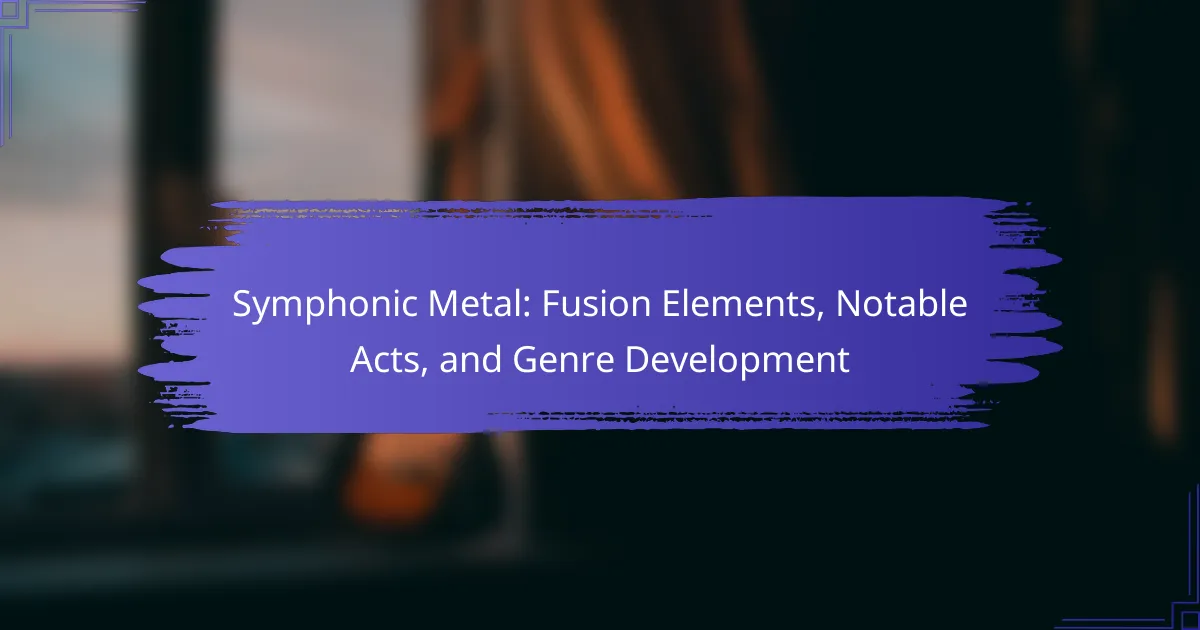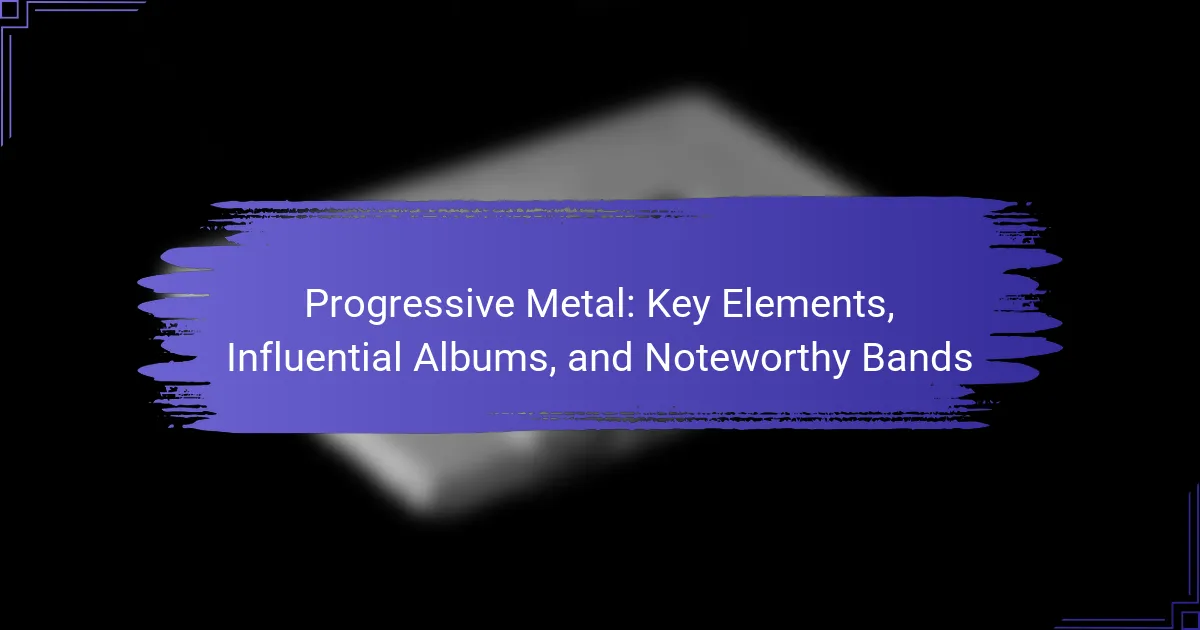Crossover Thrash is a dynamic genre that merges hardcore punk and thrash metal, appealing to diverse audiences. This article explores its key characteristics, influential bands like Suicidal Tendencies and D.R.I., and the cultural impact it has had on music and community. By examining its rapid tempos, aggressive riffs, and socially conscious lyrics, we uncover the essence of this genre and its ongoing relevance.
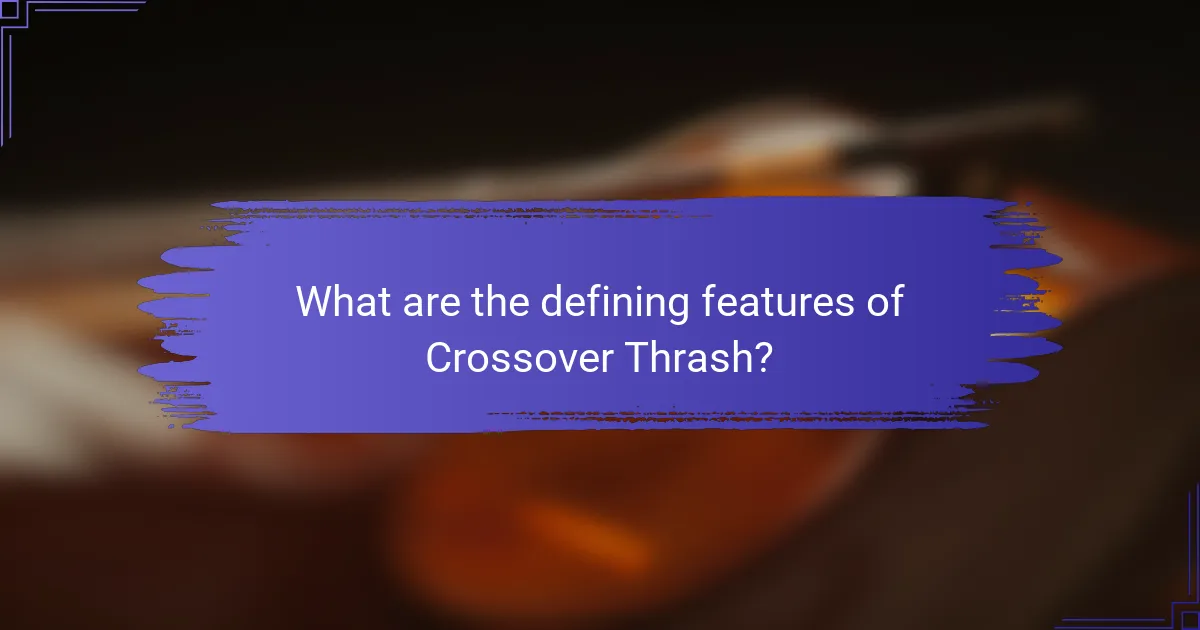
What are the defining features of Crossover Thrash?
Crossover Thrash is characterized by its fusion of hardcore punk and thrash metal, creating a fast-paced, aggressive sound. Key features include rapid tempos, shouted vocals, and socially conscious lyrics. Influential bands like Suicidal Tendencies and D.R.I. shaped the genre’s identity, while its cultural impact is evident in the DIY ethos and community-driven scenes it fostered. The unique attribute of Crossover Thrash is its ability to appeal to both punk and metal audiences, bridging gaps between subcultures.
How does Crossover Thrash blend genres?
Crossover Thrash blends genres by merging elements of hardcore punk and thrash metal. This fusion creates a fast-paced, aggressive sound characterized by heavy guitar riffs, rapid drumming, and shouted vocals. Influential bands like Suicidal Tendencies and D.R.I. exemplify this genre’s unique style, which emphasizes both musical intensity and lyrical themes of rebellion. The cultural impact of Crossover Thrash includes its role in shaping the punk and metal scenes, influencing a range of subgenres and fostering a diverse fan base.
What role do speed and aggression play in Crossover Thrash?
Speed and aggression are central to Crossover Thrash, driving its high-energy sound and intense performances. The genre blends elements of thrash metal and hardcore punk, resulting in fast tempos and aggressive rhythms. Influential bands like D.R.I. and Suicidal Tendencies exemplify this, often delivering rapid riffs and powerful vocals. This combination creates a visceral experience that resonates with audiences, reflecting the rebellious spirit of the culture. Overall, speed and aggression define the genre’s identity and appeal, shaping its musical landscape and cultural impact.
Which lyrical themes are prevalent in Crossover Thrash?
Crossover Thrash features themes of social and political commentary, rebellion, and personal struggle. Lyrics often reflect dissatisfaction with authority and societal norms. Influential bands like D.R.I. and Suicidal Tendencies exemplify these themes through aggressive and candid expressions. The genre’s unique attribute lies in its fusion of hardcore punk’s intensity with thrash metal’s complexity, creating a distinctive lyrical narrative.
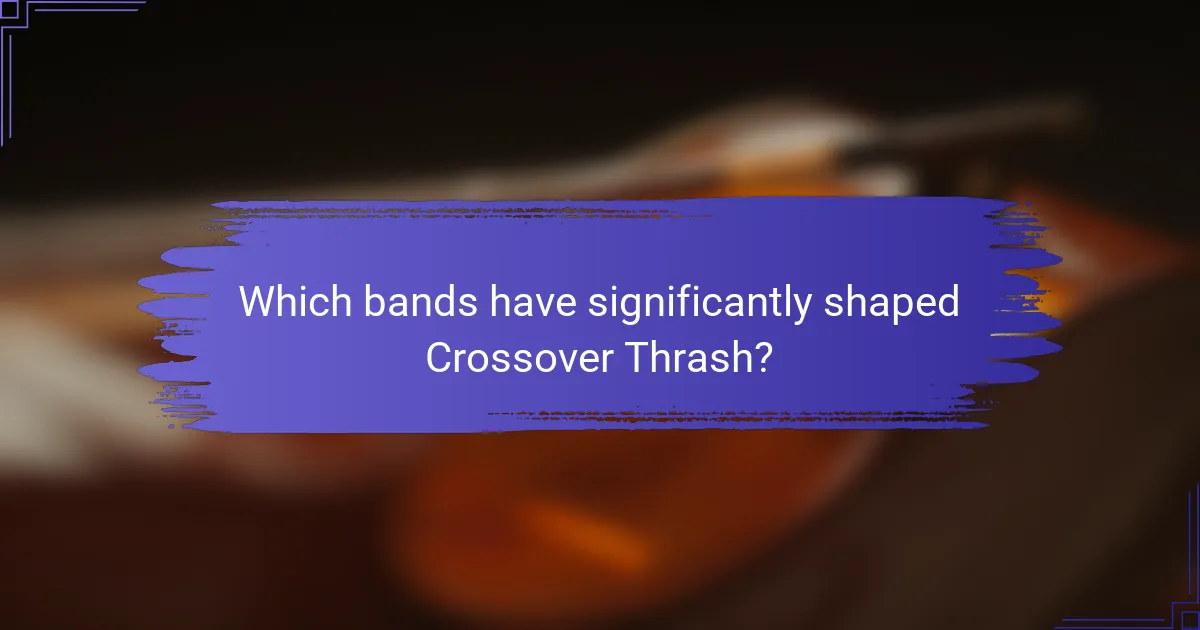
Which bands have significantly shaped Crossover Thrash?
Crossover Thrash has been significantly shaped by bands like Suicidal Tendencies, D.R.I., and Municipal Waste. These groups blend hardcore punk and thrash metal, creating a unique sound that influenced the genre’s development.
Suicidal Tendencies emerged in the early 1980s, known for their aggressive style and lyrical themes of rebellion. D.R.I. (Dirty Rotten Imbeciles) pioneered the crossover sound, merging fast tempos with punk’s raw energy. Municipal Waste revitalized the genre in the 2000s, infusing humor and a party atmosphere into their music.
Each of these bands contributed to the cultural impact of Crossover Thrash, shaping its identity and expanding its audience. Their distinct approaches highlight the genre’s diversity while maintaining its core attributes of speed and aggression.
How did bands like Suicidal Tendencies influence the genre?
Bands like Suicidal Tendencies significantly influenced crossover thrash by blending punk and metal elements. Their fast tempos, aggressive riffs, and socially conscious lyrics helped shape the genre’s sound and ethos. This fusion attracted a diverse audience, expanding the thrash metal scene. Unique attributes like their energetic live performances and innovative song structures set them apart, inspiring many subsequent bands. As a result, crossover thrash became a vital part of the 1980s music landscape, impacting culture and youth movements.
What impact did D.R.I. have on the Crossover Thrash scene?
D.R.I. significantly shaped the Crossover Thrash scene by blending hardcore punk with thrash metal. Their 1987 album “Crossover” exemplified this fusion, introducing elements like faster tempos and aggressive riffs. This innovation influenced numerous bands, expanding the genre’s appeal and encouraging cross-genre experimentation. D.R.I.’s DIY ethos and energetic live performances also fostered a vibrant underground culture, inspiring a generation of musicians. Their impact remains evident in contemporary bands that continue to merge punk and metal influences.
Which modern bands are keeping the Crossover Thrash spirit alive?
Modern bands keeping the Crossover Thrash spirit alive include Municipal Waste, Power Trip, and Iron Reagan. These bands blend elements of thrash metal and hardcore punk, maintaining the genre’s energetic and rebellious essence. Municipal Waste, known for their high-energy performances, often reference classic thrash influences. Power Trip combines heavy riffs with socially conscious lyrics, resonating with both old and new fans. Iron Reagan, featuring members from other notable bands, infuses humor into their music while staying true to the genre’s roots. Together, these bands contribute to the ongoing cultural impact of Crossover Thrash.
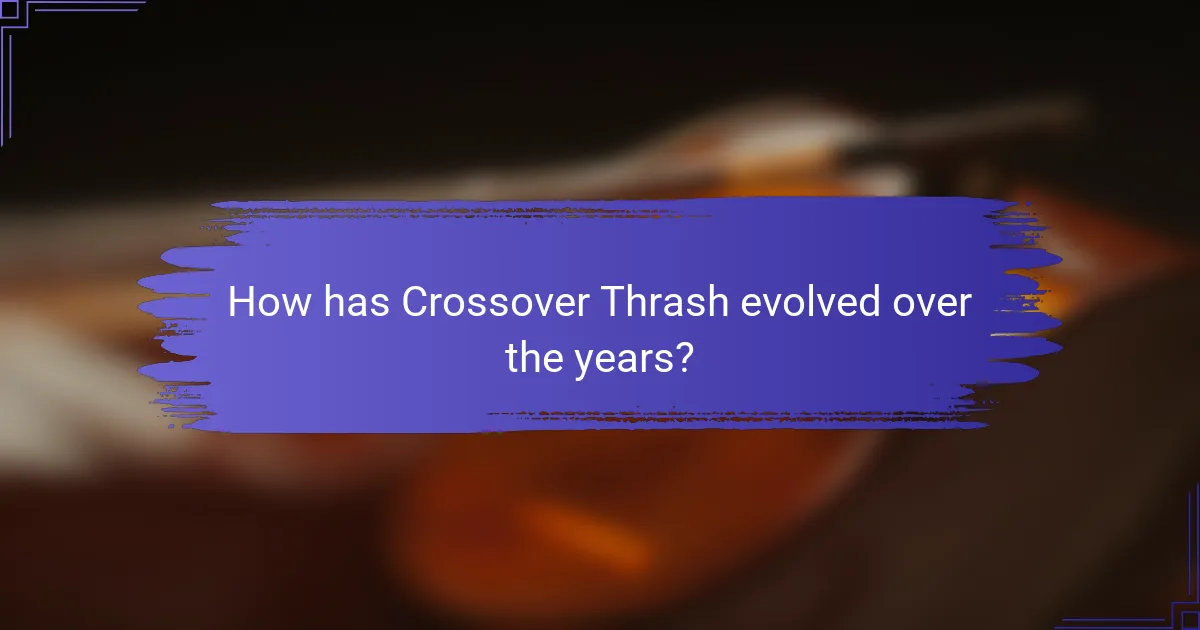
How has Crossover Thrash evolved over the years?
Crossover Thrash has evolved significantly since its inception in the 1980s, blending punk and thrash metal. Key characteristics include fast tempos, aggressive riffs, and socially conscious lyrics. Influential bands like Suicidal Tendencies and D.R.I. helped shape the genre, introducing unique elements such as crossover appeal to diverse audiences. Over the years, the cultural impact of Crossover Thrash has expanded, influencing various music styles and fostering a DIY ethic within underground scenes. The genre continues to thrive, with new bands emerging that pay homage to its roots while pushing creative boundaries.
What are the notable shifts in sound and style since the 1980s?
Since the 1980s, crossover thrash has evolved with notable shifts in sound and style. Bands began blending hardcore punk’s aggression with thrash metal’s speed, creating a unique hybrid. Influential bands like Suicidal Tendencies and D.R.I. pioneered this fusion, introducing faster tempos and complex guitar riffs. The cultural impact includes a broader acceptance of diverse musical influences, leading to increased experimentation in genres. Today, crossover thrash retains its roots while incorporating elements from various styles, reflecting the genre’s adaptability and ongoing relevance.
How do regional variations influence Crossover Thrash music?
Regional variations significantly shape Crossover Thrash music by influencing its sound, themes, and cultural context. Different regions contribute unique musical elements and lyrical content, reflecting local social issues and influences. For instance, the East Coast scene often emphasizes hardcore punk roots, while the West Coast incorporates more metal elements. This diversity creates a rich tapestry of styles within Crossover Thrash, showcasing how geography affects artistic expression. Additionally, local scenes foster distinct identities, leading to variations in instrumentation and vocal styles that enhance the genre’s overall dynamism.
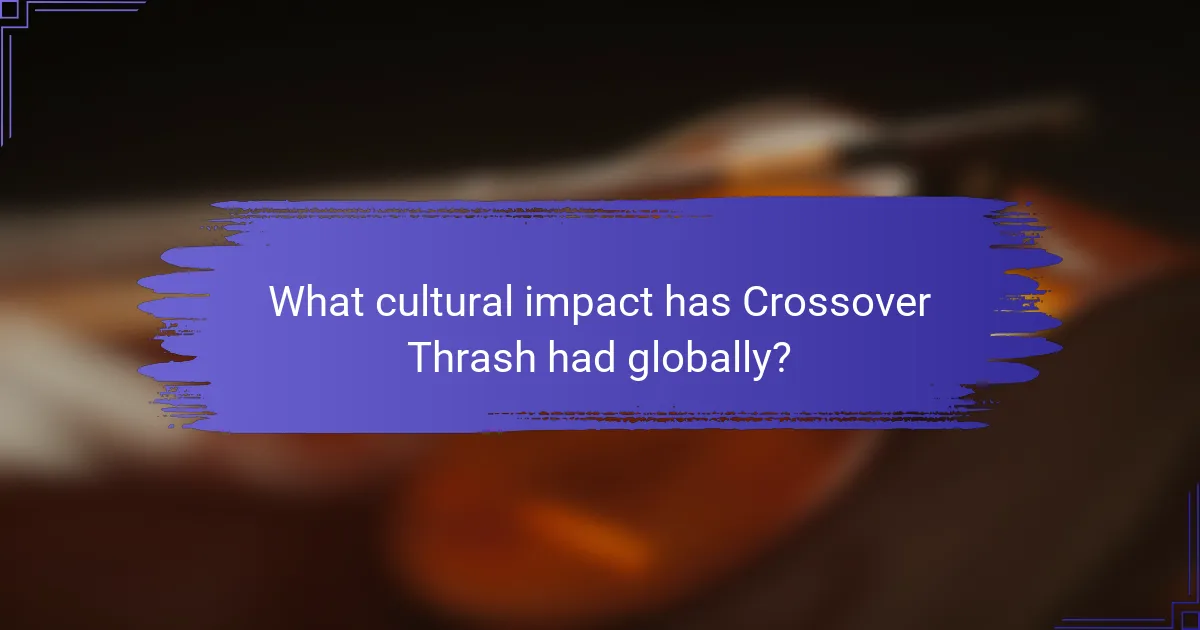
What cultural impact has Crossover Thrash had globally?
Crossover Thrash has significantly influenced global music scenes by blending punk and metal elements. This genre emerged in the 1980s, fostering a unique sound that resonated with diverse audiences. Crossover Thrash bands like Suicidal Tendencies and D.R.I. helped shape the cultural landscape by promoting anti-establishment themes and social consciousness.
The genre’s energetic style and DIY ethos inspired countless musicians worldwide, contributing to the growth of underground music movements. Crossover Thrash’s impact is evident in various subcultures, including skateboarding and extreme sports, where its music became anthemic.
Moreover, Crossover Thrash has facilitated cross-genre collaborations, enriching the global music tapestry. Its legacy continues to thrive, as newer bands draw inspiration from its roots while pushing creative boundaries.
How has Crossover Thrash influenced skate and punk culture?
Crossover Thrash has significantly shaped skate and punk culture by blending aggressive musical styles with rebellious attitudes. This genre emerged in the 1980s, combining elements of thrash metal and hardcore punk, which resonated with the skateboarding community.
The fast tempos and socially charged lyrics of Crossover Thrash reflect the ethos of skate culture, promoting freedom and anti-establishment sentiments. Influential bands like D.R.I. and Suicidal Tendencies played pivotal roles in this crossover, gaining popularity among skateboarders and punk enthusiasts.
Crossover Thrash also introduced a distinctive fashion style, characterized by band t-shirts, skate shoes, and denim jackets, further intertwining music with skate culture. As a result, this genre has fostered a unique identity that continues to influence modern punk and skate scenes.
What role does Crossover Thrash play in contemporary music festivals?
Crossover Thrash plays a significant role in contemporary music festivals by blending punk and metal, attracting diverse audiences. This genre’s fast tempos and aggressive sound resonate well in live settings, energizing crowds. Influential bands like Suicidal Tendencies and D.R.I. have shaped festival lineups, showcasing the genre’s cultural impact. Festivals often feature Crossover Thrash to highlight its roots in rebellion and community, creating an inclusive atmosphere that celebrates various subcultures.
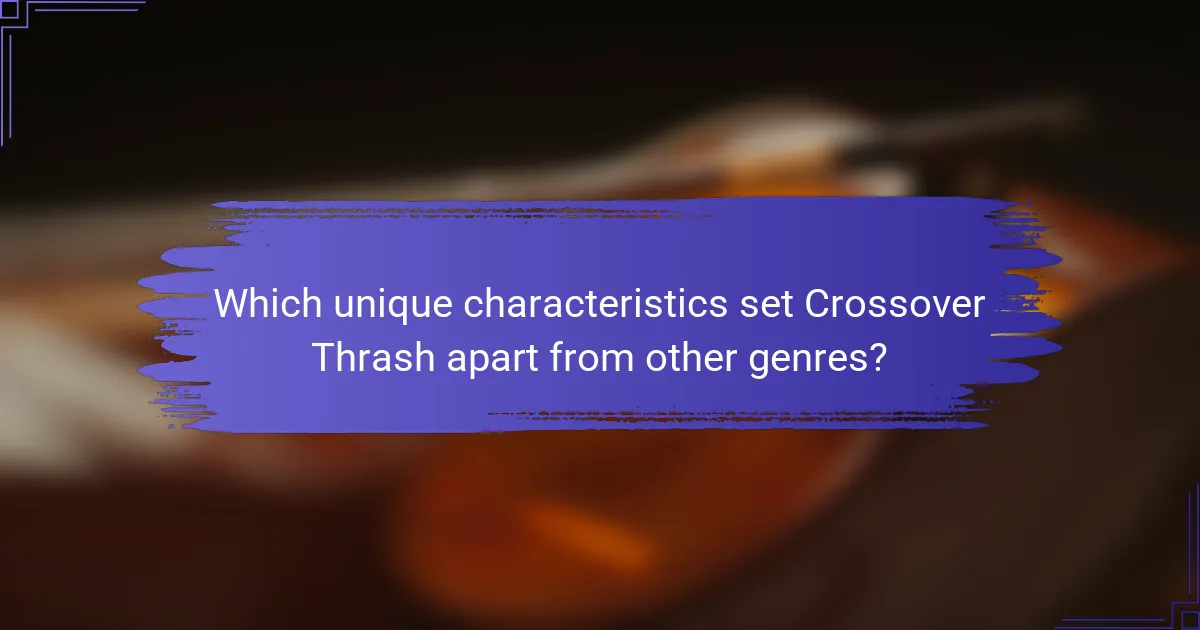
Which unique characteristics set Crossover Thrash apart from other genres?
Crossover Thrash uniquely blends elements of hardcore punk and thrash metal, creating a fast-paced, aggressive sound. Its defining characteristics include a fusion of rapid tempos, heavy guitar riffs, and socially conscious lyrics. Influential bands like D.R.I. and Suicidal Tendencies exemplify this genre’s distinct style. Additionally, the genre’s cultural impact is marked by its embrace of DIY ethics and community-focused attitudes.
What are the distinctive vocal styles found in Crossover Thrash?
Crossover Thrash features distinctive vocal styles that blend aggressive punk and thrash metal elements. Vocals often include shouted, high-pitched screams and aggressive growls, emphasizing energy and intensity. Influential bands like Suicidal Tendencies and D.R.I. exemplify these styles, using varied techniques to convey urgency and emotion. The fusion of punk’s rawness with metal’s technicality creates a unique vocal landscape that defines the genre.
How do instrumental techniques differ in Crossover Thrash compared to other subgenres?
Instrumental techniques in Crossover Thrash emphasize speed, aggression, and a blend of punk and metal elements, setting them apart from other subgenres. Crossover Thrash typically features fast tempos, intricate guitar riffs, and prominent bass lines, creating a unique sound. Influential bands like D.R.I. and Suicidal Tendencies exemplify these techniques, showcasing rapid drumming and shout-style vocals. This subgenre’s distinct approach to instrumentation fosters a raw energy that resonates with its cultural impact, appealing to both punk and metal audiences.
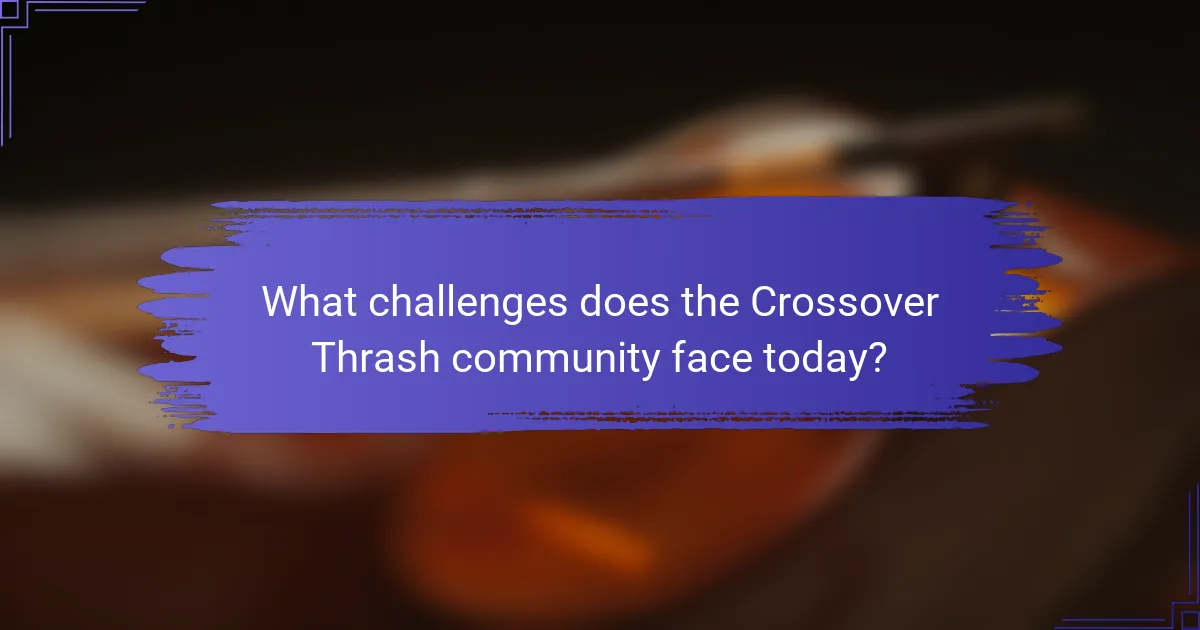
What challenges does the Crossover Thrash community face today?
The Crossover Thrash community faces challenges such as maintaining relevance, balancing genre boundaries, and addressing the decline in live music attendance. These issues stem from changing music consumption habits and the rise of digital platforms. Many fans feel disconnected from the original ethos, leading to a struggle for authenticity. Additionally, the community contends with the saturation of music genres, complicating the promotion of Crossover Thrash bands.
How is the genre perceived in the current music landscape?
Crossover thrash is perceived as a dynamic and influential genre in today’s music landscape. It blends elements of thrash metal and hardcore punk, appealing to diverse audiences. The genre’s resurgence is marked by a new wave of bands that merge aggressive instrumentation with socially conscious lyrics. Influential acts like Suicidal Tendencies and Municipal Waste continue to shape its evolution, attracting both old fans and new listeners. The genre’s cultural impact is evident in its vibrant community and presence at music festivals, showcasing its enduring relevance.
What are common misconceptions about Crossover Thrash?
Crossover Thrash is often misunderstood as merely a blend of thrash metal and hardcore punk. Many believe it lacks musical complexity, but it actually features intricate riffs and diverse tempos. Some assume it is solely a 1980s phenomenon, while influential bands continue to shape its evolution today. Additionally, misconceptions exist around its lyrical themes, which often explore social issues rather than being limited to violence or rebellion.
How can fans support the Crossover Thrash scene?
Fans can support the Crossover Thrash scene by attending shows, purchasing merchandise, and promoting local bands. Engaging with the community on social media helps spread awareness and connect with artists. Volunteering at events or festivals can also strengthen the scene. Collaborating with other genres can introduce Crossover Thrash to new audiences.
What best practices can artists adopt to thrive in the Crossover Thrash genre?
Artists can thrive in the Crossover Thrash genre by embracing its core elements and adapting to its dynamic landscape. Focus on blending hardcore punk energy with thrash metal complexity. Collaborate with diverse musicians to expand creative boundaries. Engage actively with the community through live performances and social media. Experiment with lyrical themes that resonate with both punk and metal audiences. Stay informed about genre trends to maintain relevance.

